Most people are perfectly satisfied with the camera in their smartphone. But to photographers and hobbyists, even the latest iPhone doesn’t come close to emulating the capability of a full-fledged camera. Panasonic’s CM1 is the answer.
What Is It?
It’s a $1399 unlocked GSM Android phone with a 4.7-inch 1080p display, 2.3GHz quad-core processor, and by far the best camera you can find in a phone. Or, it’s a $1399 compact camera with a one-inch sensor and 28mm f/2.8 lens that also includes a mid-range Android smartphone.
Whichever way you slice it, the CM1 provides the immediate connectivity of a smartphone with the image quality of a standalone camera (a pretty great one, at that). It’s the first device of its kind from Panasonic, and as long as you don’t count the Samsung Galaxy Camera which couldn’t make phone calls, it’s one of the two you can get in Australia — the other of which is the Samsung Galaxy K Zoom.
The CM1 doesn’t look awful, and it’s amazing how thin the thing is, considering the camera inside. But it was still just thick enough to make me a bit uncomfortable. I couldn’t escape the feeling that I was carrying a camera in my pocket, instead of a phone. The feeling is amplified when the camera is engaged and the lens extends even further. It doesn’t do that in your pocket, thankfully, but you still can’t help but notice it when handholding the thing.
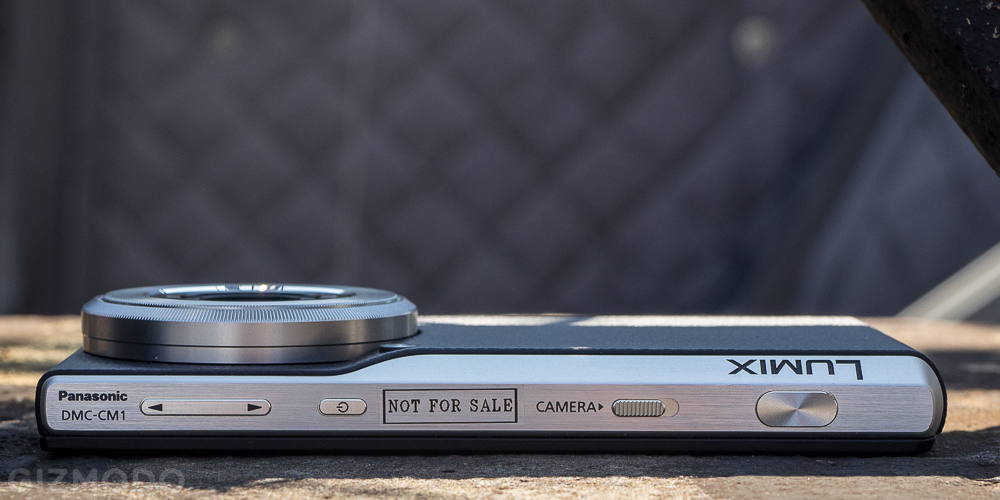
The thickness of the CM1 compared to an iPhone 6:
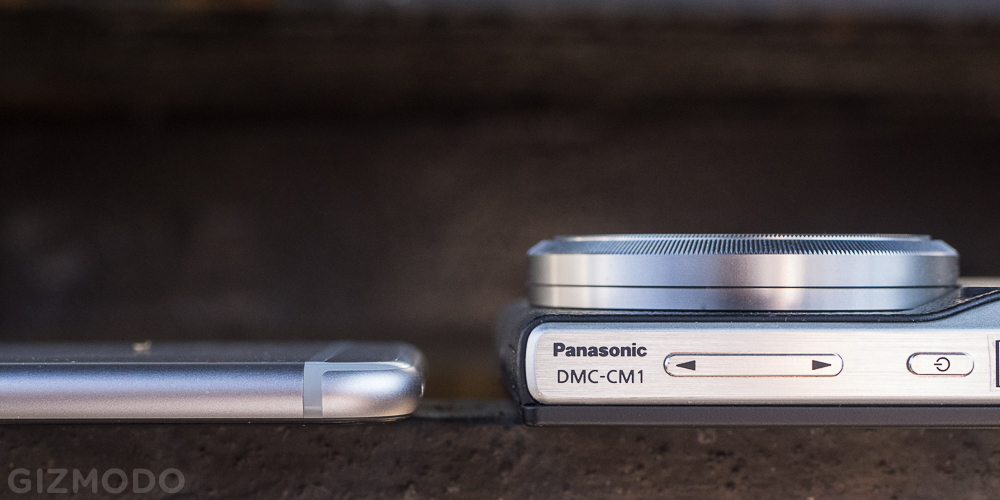
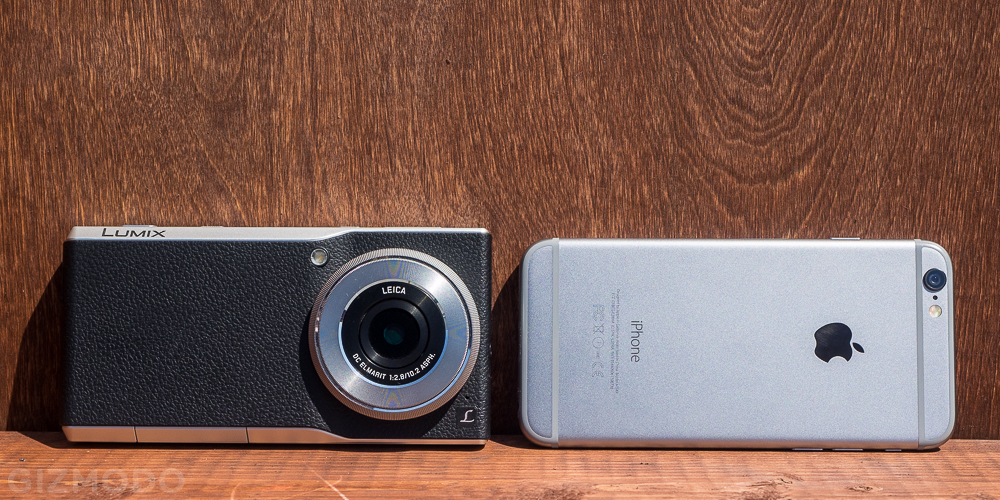
[clear]
The physical controls of the CM1 include a switch that can engage the camera at a moment’s notice, plus a dedicated shutter button. The lens features a rotating aperture ring as well; a nice touch. I love how these buttons work, though my biggest gripe is the weird tactile experience. There are multiple textures that feel extremely cheap, like the machining around the lens ring; it feels like sandpaper.
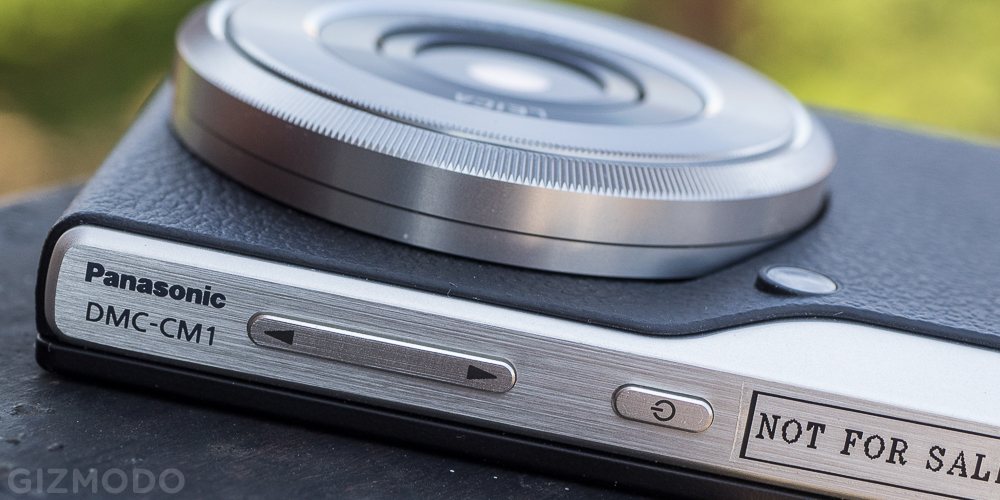
What’s It Good At?
Inevitably when you have a hybrid device like this, the question becomes: what are the compromises? The camera definitely isn’t a gimmick. The one-inch sensor is similar to what you find in premium compact cameras like the Sony RX100 series, and that translates directly to better image quality. Compared to the iPhone 6, with a tiny ⅓ inch sensor, the CM1 will churn out pics that are more detailed, with much more accurate colours, and much less noise in low light.



[clear]

Here’s a low-light test. The CM1 shot this at ISO 1600:
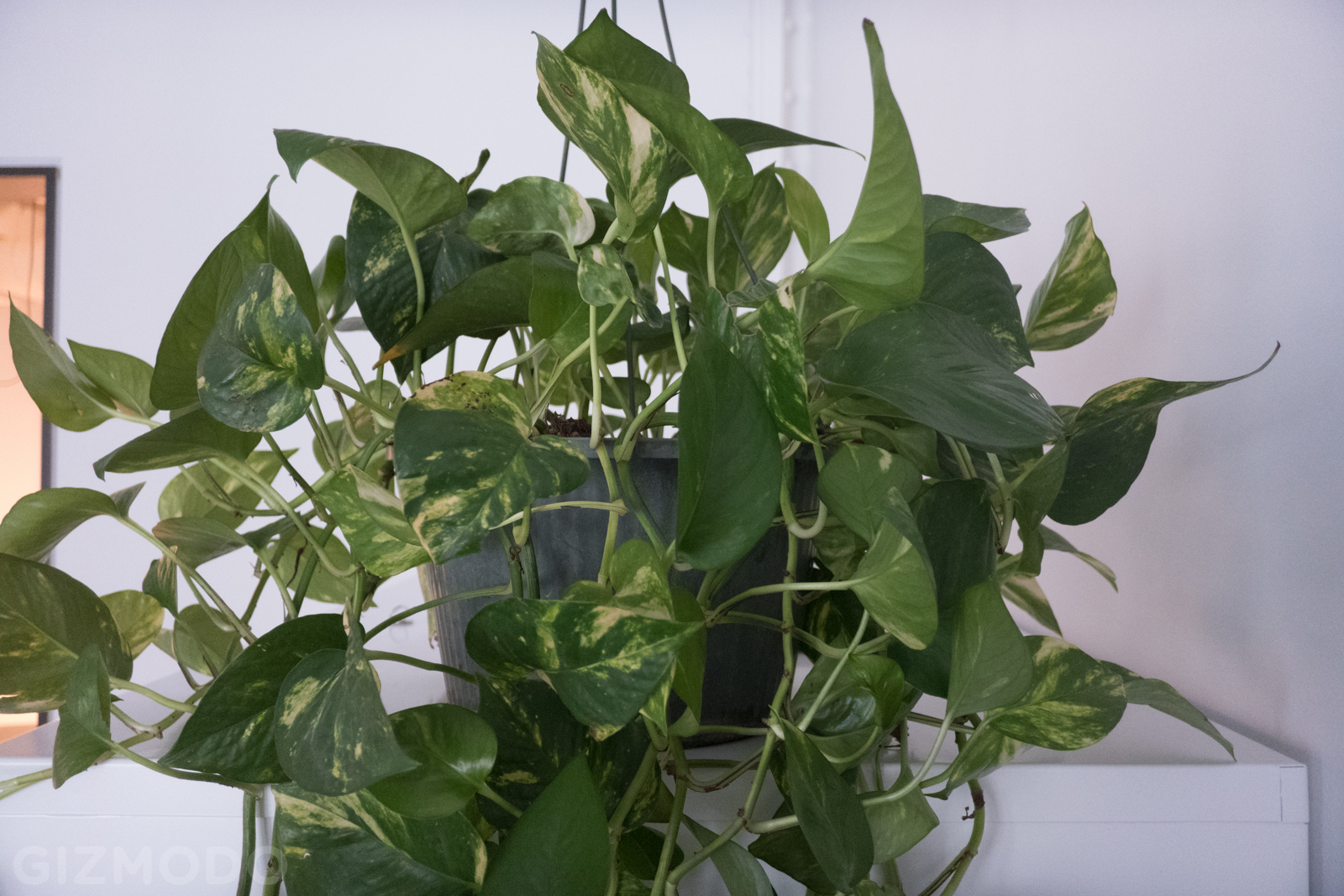
Here is a cropped area of the image, showing how the detail of the RAW CM1 file compares to the in-camera JPG, as well as an iPhone 6 JPG:
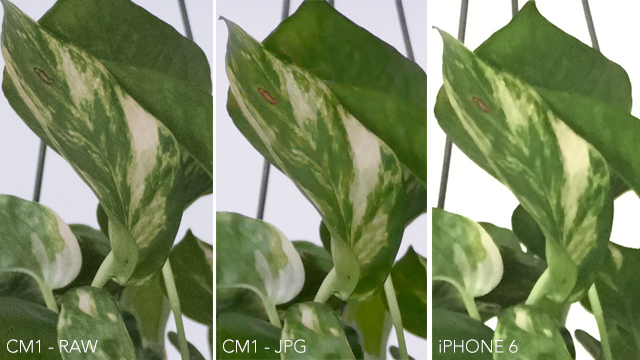
The larger sensor also gives you some more control over depth of field — things in the background will be more out of focus than things in the foreground, which can give your shots more of that buttery blur that photographers crave.
But despite the great sensor, the CM1 still falls short of cameras like the RX100, and that’s because of lens quality. I sometimes ended up with discolored vignetting (uneven brightness) in my photos, and detail, while still good, is slightly inferior to the RX100 Mark IV which I tested it against.

Here are detail crops of the same scene, shot with the CM1, RX100 Mark IV, and iPhone 6. Look at the brick building at the top for the best detail comparison:
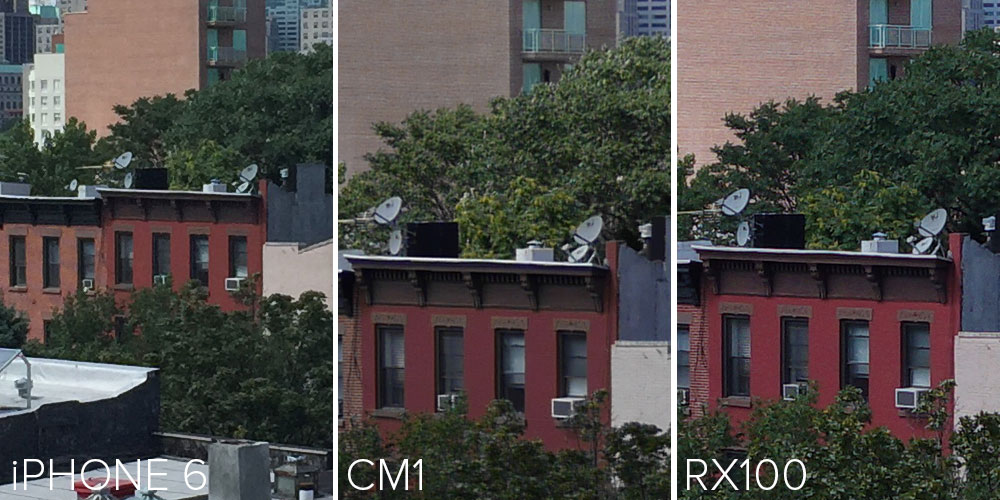
Photos can be saved as JPGs, just like a regular phone, or you can shoot RAW, which will give you a much better quality image to edit and manipulate. The RAW files can’t be viewed in most third-party apps, but they are really there for editing on your computer, not your phone. These 20 megapixel files take up a lot of space, and the phone only has 16 GB of internal memory. Luckily, there is a slot for a microSD card. One really frustrating thing is that when you set the CM1 to record both JPG and RAW, it adds a horribly long 5 or so seconds of processing time after you snap a pic. That’s just too damn long, and basically makes this mode a non-option. So you have to choose. Shoot RAW for best quality, or shoot JPG for shareability. Hmph.
The camera interface, built by Panasonic, is a mixed bag. Most settings are easy to access, but holy crap is it ugly. I just hate looking at it. And it will no doubt confuse people who aren’t used to standard camera controls. You can use third-party camera apps, but none of them have the controls for all of the CM1’s functions. The Panasonic app provides access to things like traditional camera modes, focus settings, and metering. That means way more control than you will ever find on a smartphone.
So sure, you can use this as your uber-Instagram phone, even take the shot directly from the Instagram app, but you’ll probably want to use Panasonic’s app first.


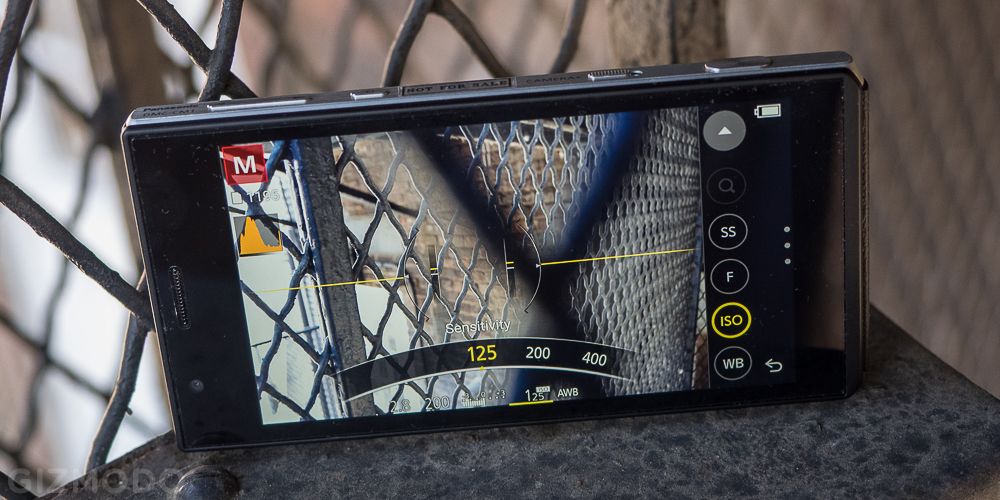
I was happy to learn that the CM1 already has an update to Android 5.0.1 Lollipop, even though it’s packaged with Kit-Kat. Nothing grinds my gears more than using an outdated operating system.
What’s It Not Good At?

Having a kickass camera (for the most part) always at the ready with the immediate ability to edit and share your photos without jumping through hoops is great. But the hardware is a generation short of feeling truly modern, and will be rendered obsolete in no time at all. Then you won’t feel so great about the $1399 investment.
Confession: I’m an iPhone owner. I’ve used Android in short stints on test phones, but haven’t lived with it full time. But it worked fine, and when I handed the CM1 to our resident smartphone expert Darren Orf, he was pretty impressed with how clean and snappy the phone felt compared to other mid-range Android devices. Amazingly, Panasonic didn’t feel the need to saddle the CM1 with an overwrought software skin or a whole bunch of unnecessary apps. You’re almost getting the stock version of Android here.
Does that mean it could replace your phone? Maybe, unless you care about battery life. The CM1’s battery life sucks. Even on days when I barely used the device at all, I found it drained to around 25% by the end of the day. That’s with a brand-new battery. Months from now, will it still make it to the charger at night if I take pictures during the day?
Video on the CM1 is poor. To me it looks worse than the iPhone 6, which is disappointing. It focuses poorly in video mode as well.
Should You Buy It?
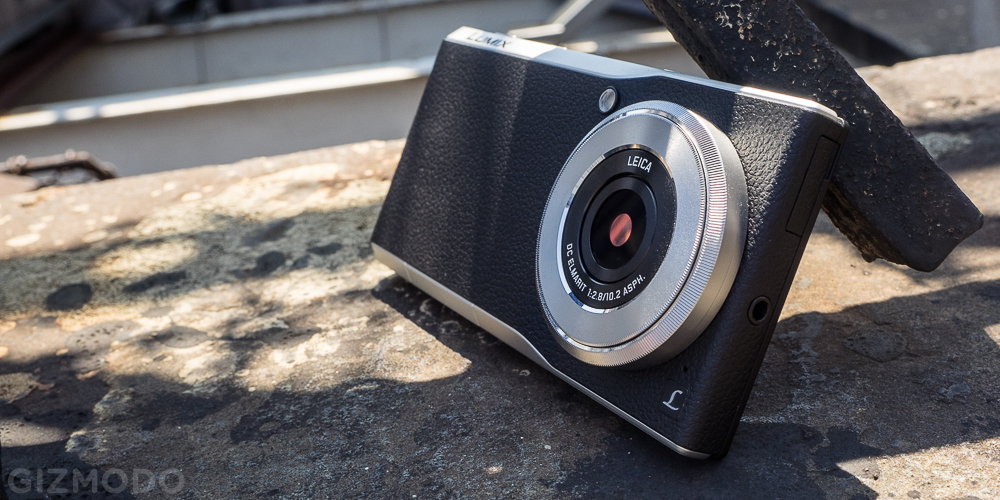
I love the idea of this phone, and I even don’t hate the execution. Kudos to Panasonic for tackling such a daunting task. But I can’t wholeheartedly recommend the CM1 as a thing to spend $1399 on. In addition to questionable things like battery life, the camera interface, and hardware specs, the fact is this: even if it sports an amazing camera, this above-average phone will be considered a totally shitty phone in about a year’s time.
It’s true that an unlocked top-of-the-line iPhone 6 is $999, but that phone has specs that will last you much longer than the CM1. And at least you can get it for a subsidized price on contract, unlike Panasonic’s phone.
The life of a brand new camera nowadays should be 3 to 5 years before it’s laughably out of date. A phone, on the other hand, is usually replaced every two years, often with a carrier’s help. That’s the fundamental problem this concept faces. Until we can stuff large sensors into normal smartphones — smartphones that we’d actually use — the dream of a premium camera in a phone remains impractical.
